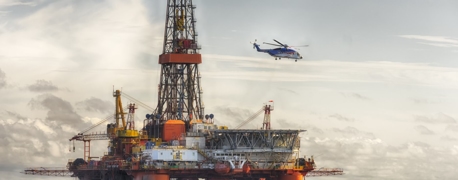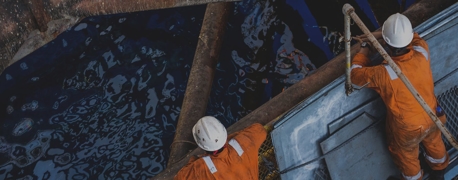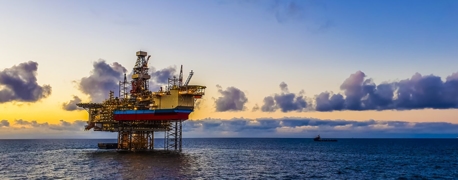7 Reasons for Commercial Vessel Accidents

Commercial vessels, from cruise ships to tugboats, are responsible for transporting people and cargo across navigable waters. This includes oceans and inland waterways. While many of these vessels make it from port to port without incident, there are some that experience devastating accidents that leave crew members seriously injured or lost forever.
While every commercial vessel accident is different, it is possible to pinpoint various causes. Here we will look over the reasons commercial boat accidents happen and who is responsible for keeping vessel crews, passengers, and cargo safe.
Accidents Involving Commercial Vessels
26 U.S. Code § 4462 defines a commercial vessel used for one of two purposes: “transporting cargo by water for compensation or hire” or “transporting cargo by water in the business of the owner, lessee, or operator of the vessel.” In this sense, cargo also includes passengers.
There are many different types of commercial vessels, such as:
- Tugboats
- Fishing vessels
- Barges
- Crew boats
- Supply boats
- Cargo ships
- Security patrol vessels
- Sightseeing vessels
- Cruise ships
- Ferries
The crew on any commercial boat, large or small, may be in danger if the vessel is not seaworthy or if it is improperly operated or maintained. Vessels may capsize in rough waters, be lost in a storm, or sink after a serious fire or explosion. Other accidents may not result in the loss of the vessel itself but injury or death of crew members or passengers. It is important to understand the reasons for commercial vessel accidents so one can identify how they can be prevented and who should be held responsible for helping crews and families rebuild.
Here are seven reasons for commercial vessel accidents:
1. Weather
Weather has a significant impact on commercial vessels and their crews. Commercial ships cannot function when the weather gets too bad, and entire crews can be lost in severe storms. This happened to the entire 33-person crew of the El Faro, which sank after steaming into the eyewall of Hurricane Joaquin in October 2015. In 2019, 11 of the 14 crew members aboard the Bourbon Pride lost their lives when the tug sank in Hurricane Lorenzo. In 2020, 41 of 43 crew members aboard the Gulf Livestock 1 were lost in the East China Sea when the vessel sank in Typhoon Maysak.
It isn’t only tropical storms and hurricanes that pose a danger to commercial vessels. Rough seas and cold temperatures can be a factor as well. In high latitudes, freezing spray can cause ice to accumulate on masts and superstructures, causing vessels to capsize. This may have been a factor in the loss of the Scandies Rose off the Alaskan coast in December 2019 (5 lives were lost) and the loss of the Onega in the Barents Sea in December 2020 (17 lives were lost).
While we have listed weather as a reason for commercial vessel accidents – and it certainly is a contributing factor – there are other issues to consider. As stated by the authors of an article on the World Meteorological Organization (WMO) website, “Extreme maritime weather continues to contribute to the loss of cargo, vessels, and crews. However, investigations reveal a number of causative factors in addition to the weather.”
Mother Nature cannot be blamed for claiming ships and human lives. While weather may play a part in a commercial vessel accident, one must ask important questions that could shed light on underlying causes. Why did the vessel travel in the storm’s path in the first place? Was the vessel seaworthy? Did the vessel owners implement the right practices and provide adequate equipment to protect the crew?
When the El Faro was lost to Hurricane Joaquin, an investigation and subsequent accident report by the National Traffic Safety Board (NTSB) revealed critical decision-making errors and an unseaworthy ship. Joaquin may have sunk the 40-year-old vessel, but she should not have steamed into the storm in the first place. She also should have been properly maintained.
2. Communication Errors
Communication is important in any field or occupation. On a commercial vessel, it can mean the difference between life and death for the crew. That’s what happened on January 26, 2020, on the Mississippi River just west of New Orleans. Three men lost their lives in a massive barge collision.
The accident happened just before dawn as 2 towboats, the Cooperative Spirit and the RC Creppel, approached each other near a bend in the river and collided at mile 123 near Destrehan, Louisiana. The RC Creppel capsized and sank, resulting in the loss of three of her four-man crew. An NTSB investigation revealed that “insufficient radio communication” and inaccurate Automatic Identification System (AIS) information regarding tow size caused the accident.
Click here to read our blog on the NTSB’s Report on the New Orleans Barge Collision.
3. Improper Training or Experience
When a commercial vessel is operated in any capacity by an improperly trained crew, a serious accident may occur. Lacking knowledge about ship systems, safety practices, machinery operation, or other procedures or equipment, a crew member may be unable to carry out their job duties. They may not know how to respond to an emergency or even what gear to wear. This makes them – and the vessels they work on – susceptible to accidents like fires, man overboard losses, explosions, and capsizing.
Owners and operators are responsible for properly manning commercial vessels, and that includes ensuring crew members are trained and experienced enough to perform required tasks. They must also ensure crew members are properly trained on safety procedures like man overboard incidents and lifeboat evacuation and operation. Lack of training or experience can have disastrous results at sea, but crews themselves are not to blame.
4. Lax Safety Standards
Commercial vessels are potentially hazardous environments due to the nature of the work performed, the presence of heavy machinery and complex equipment, and the fact that they operate in volatile weather and seas. Numerous regulations and procedures are in place to minimize risk and maximize safety on commercial ships. These must be followed to the letter for the safety of the crew and passengers as well as the cargo and the vessel itself.
Unfortunately, some companies relax or ignore safety standards in an effort to maximize production or avoid downtime. This can have catastrophic consequences.
The following are examples of potential safety violations:
- Allowing a crew member to work on deck alone
- No set plan of action in place to handle a man overboard emergency
- Lack of safety guards or a kill switch on a deck winch
- Failure to provide proper protective gear for crew members
- Allowing crew members to work on deck without personal flotation devices (PFDs)
- Lack of non-skid material on decks and other slippery surfaces
- Inadequate ventilation in work areas
- Delayed maintenance/replacement of aging equipment
5. Equipment Failure
Every piece of machinery and equipment on a commercial vessel must be in proper working order for the safety of the crew, the ability of the vessel to carry out its purpose, and the vessel’s overall seaworthiness. Equipment failure, such as the incorrect AIS information that was conveyed and contributed to the collision of the Cooperative Spirit and the RC Creppel on the Mississippi River, can cause commercial vessel accidents that lead to catastrophic injuries or claim crew members’ lives.
In the case of the collision of the Cooperative Spirit and the RC Creppel, the devices that were supposed to transmit information regarding the size of the vessels did not provide the right numbers. The RC Creppel AIS signal said it was a 69-foot vessel. In reality, it had a 450-foot tow. The Cooperative Spirit indicated it was a 200-foot vessel. It actually had a 1,600-foot tow.
That is just one example of how equipment failure can be a reason behind a commercial vessel accident. Improper maintenance, shoddy repairs, and design or manufacturing defects can cause equipment to malfunction or fail. In these cases, maritime employers may be responsible for maintenance failures and manufacturers may be responsible for producing inferior products that do not perform as they should.
6. Poor Decision-Making
The decisions that vessel owners and operators make will directly impact a commercial ship and its entire crew. If these decisions are made with only profits and productivity in mind, the crew may suffer the consequences. The loss of the El Faro is a tragic example of this. The decision to maintain course, directly into Joaquin’s path, was a primary cause for the loss of the vessel and her crew.
Despite the warnings from regulatory groups and the U.S. Coast Guard regarding weather and sea conditions, we are continuing to see vessel owners and operators make decisions that place their crews at risk. That’s what happened when a drillship called the Globetrotter II was left in Hurricane Ida’s path in August 2021. Noble and Shell, the owner and lessor of the ship, failed to evacuate the crew before Ida struck. Over 100 crew members were tossed about in horrific conditions as the drillship weathered the hurricane. They were rescued by the Coast Guard, but not before experiencing severe physical and emotional trauma. A number of Globetrotter II crew members turned to Arnold & Itkin for help.
Poor decision-making also led to the near loss of the Triton Hedron, also in Hurricane Ida. When Ida struck, the vessel was docked at Port Fourchon. Her crew had been ordered to remain on board, even though the National Hurricane Center had forecasted the hurricane’s path. There was time to safely evacuate the crew, but this decision – the right decision – was not made. Ida pulled the Triton Hedron from the port and sent the vessel to sea, throwing the crew about for hours before they could regain control and make it back to shore. One of the crew members turned to Arnold & Itkin for help.
7. Understaffing
Seaworthiness does not only include the vessel itself. It also includes a ship’s crew; having enough crew members is a crucial part of this. There must be enough seamen to carry out the necessary functions of the vessel. Understaffing can be extremely dangerous on any commercial vessel, no matter its function.
That’s what happened to the Wakashio. On July 25, 2020, the Japanese bulk carrier ran aground on a coral reef near Mauritius, breaking apart and leaking about 1,000 metric tons of oil into the ocean. At the time of the incident, the Wakashio was operating with a skeleton crew. The vessel should have had a crew of 24, but only 20 seamen were aboard. What’s more, 3 of the 20 seamen were on extended contracts and 2 had been on board for over 12 months, in violation of maritime regulations.
Understaffing of a commercial vessel can lead to:
- Fatigue from working too-long shifts or too many shifts without breaks
- A tired, overworked crew
- An inability to meet safety standards
- Not enough crew to properly manage the vessel and all its equipment
In addition to ensuring there are enough crew members at the beginning of a voyage, maritime employers must replace any seamen who become injured or fall ill while at sea. Failing to keep a vessel fully staffed can have serious consequences, as there will not be enough people to manage and maintain the ship, not to mention handle any emergency that may arise.
Helping Commercial Vessel Crews Since 2004
Arnold & Itkin is a recognized leader in maritime law, having helped crews and families after the worst offshore accidents and vessel disasters in history. We represented one-third of the Deepwater Horizon crew, securing unmatched results that ensured they and their families were taken care of. We helped three widows of the El Faro find answers and accountability after losing their husbands at sea. We continue to represent seamen who need their rights protected under maritime law. When commercial vessel accidents happen, crews turn to Arnold & Itkin’s maritime lawyers for the help they need.


